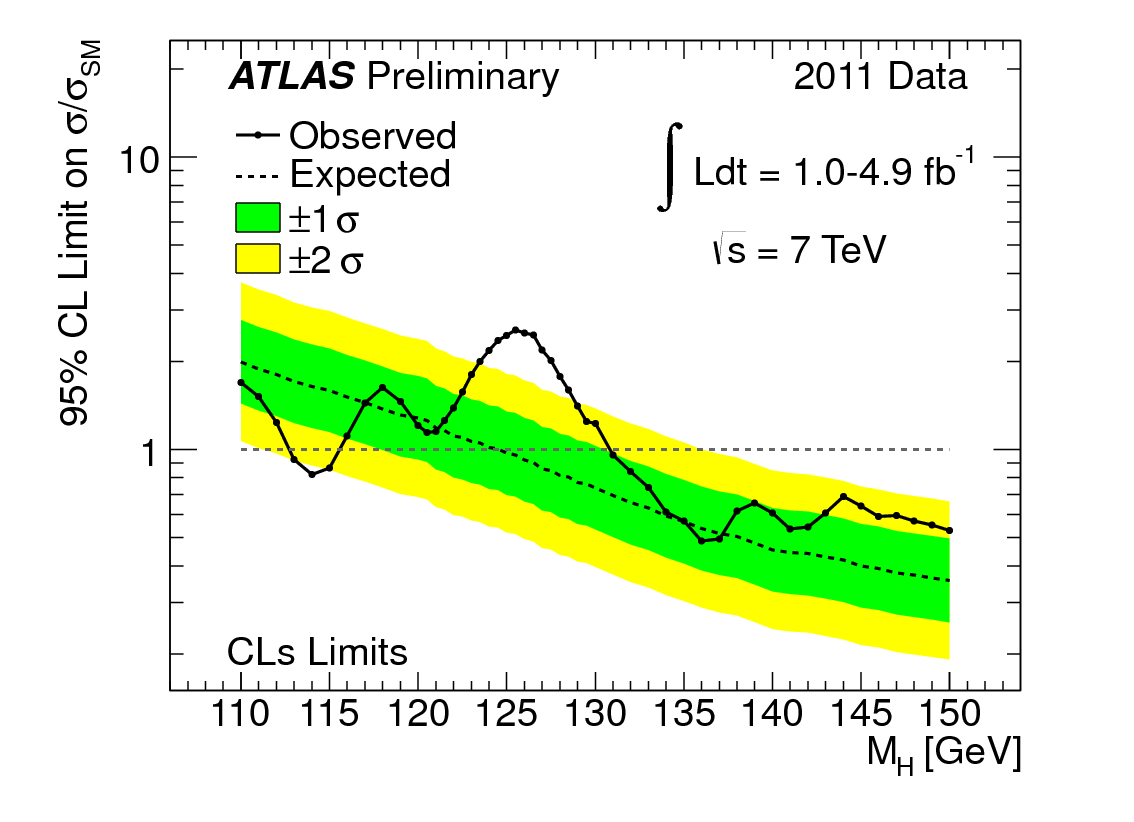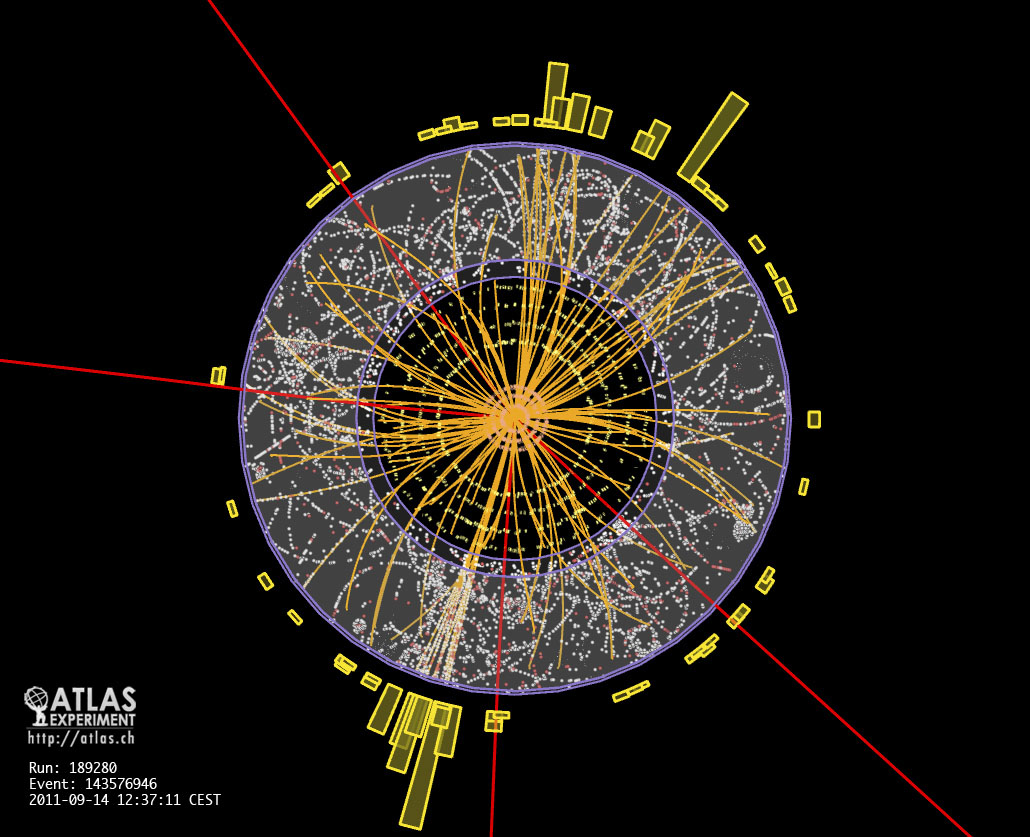ATLAS experiment presents latest Higgs search status
13 December 2011 | By
The statement below is also available in: Chinese, Dutch, French, German, Italian, Japanese, Brazilian Portuguese, Portuguese

The latest update of the ATLAS searches for the Standard Model Higgs boson was presented at a CERN seminar on December 13, 2011. As stated in the CERN press release, the new ATLAS and CMS results are "sufficient to make significant progress in the search for the Higgs boson, but not enough to make any conclusive statement on the existence or non-existence of the elusive Higgs. Tantalising hints have been seen by both experiments in the same mass region, but these are not yet strong enough to claim a discovery."
"We have restricted the most likely mass region for the Higgs boson to 115-130 GeV, and over the last few weeks we have started to see an intriguing excess of events in the mass range around 125 GeV," explained ATLAS experiment spokesperson Fabiola Gianotti. "This excess may be due to a fluctuation, but it could also be something more interesting. We cannot conclude anything at this stage. We need more study and more data. Given the outstanding performance of the LHC this year, we will not need to wait long for enough data and can look forward to resolving this puzzle in 2012."

The CMS experiment also has updated their results in this same low mass region.
The Higgs boson is predicted by the Standard Model. Via the Higgs field, it gives mass to the fundamental particles. It is so short-lived that it decays almost instantly, and the experiment can only observe the particles that it decays into. The Higgs boson is expected to decay in several distinct combinations of particles, and what is most intriguing about these results is that small excesses of events are seen in more than one such decay mode and in more than one experiment.
To identify and discover the Higgs Boson will take an enormous amount of data because the Higgs boson is very rarely produced. A definitive statement on the existence or non-existence of the Higgs is not likely until later in 2012.
Discovery of the Higgs boson would be the first step on the path to many other new advances.
Links:
- Interview with Fabiola Gianotti
- CMS Experiment latest Higgs results
- Combination of Higgs Boson Searches
- Search for the Standard Model Higgs boson in the decay channel H→ZZ(*)→4 leptons
- Search for the Standard Model Higgs boson in the diphoton decay
- Search for the Higgs boson in the H→WW(*)→lvlv decay channel


